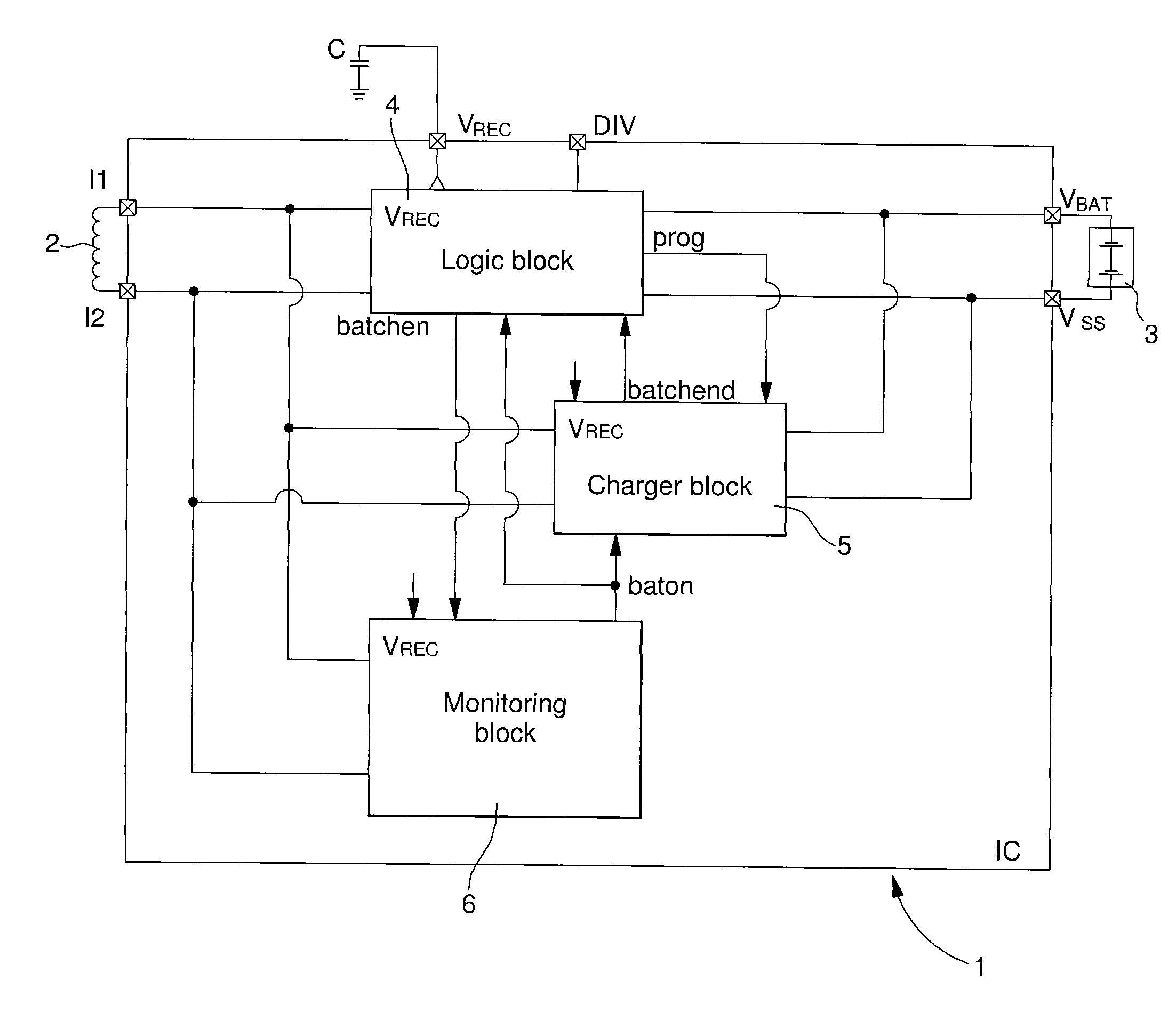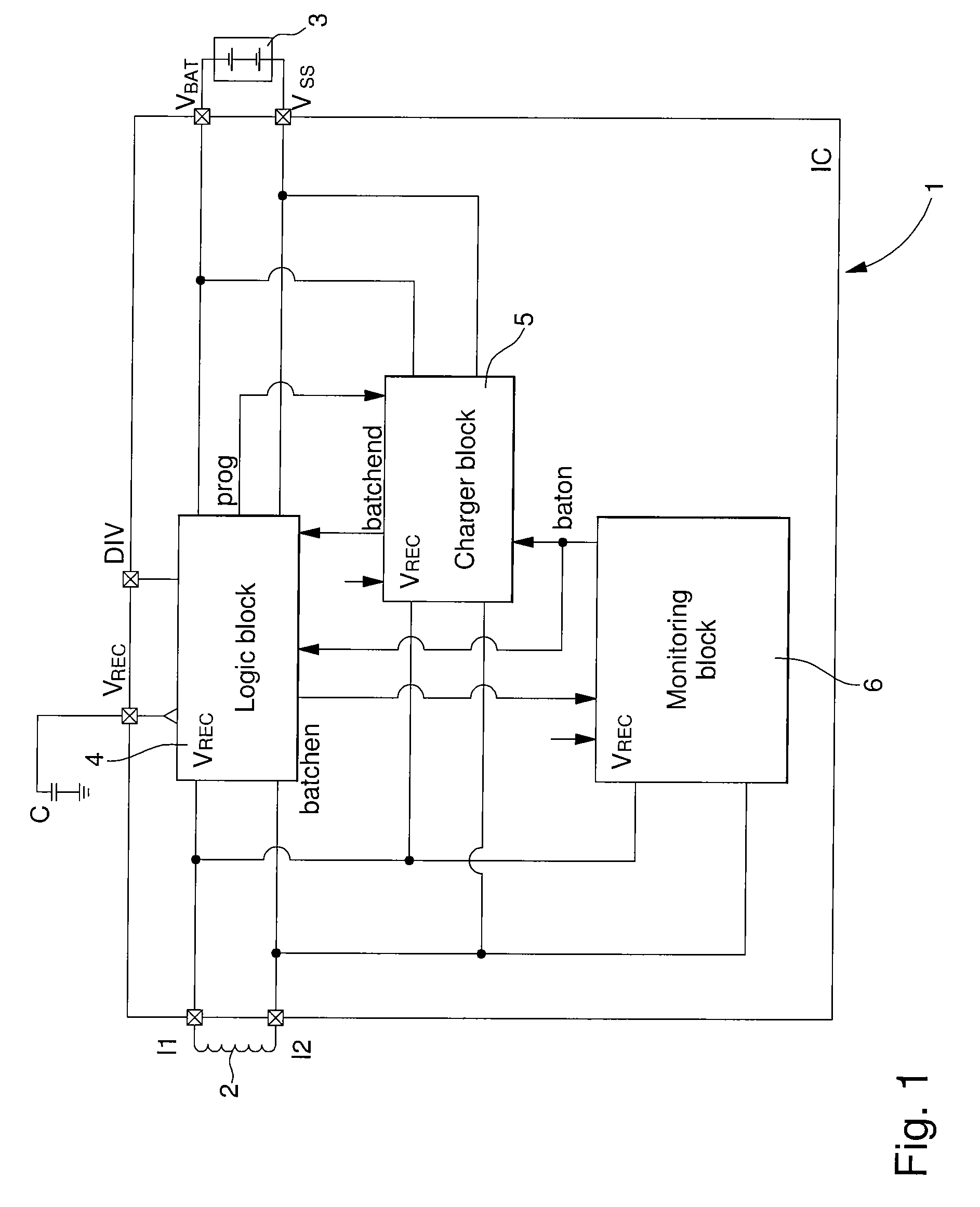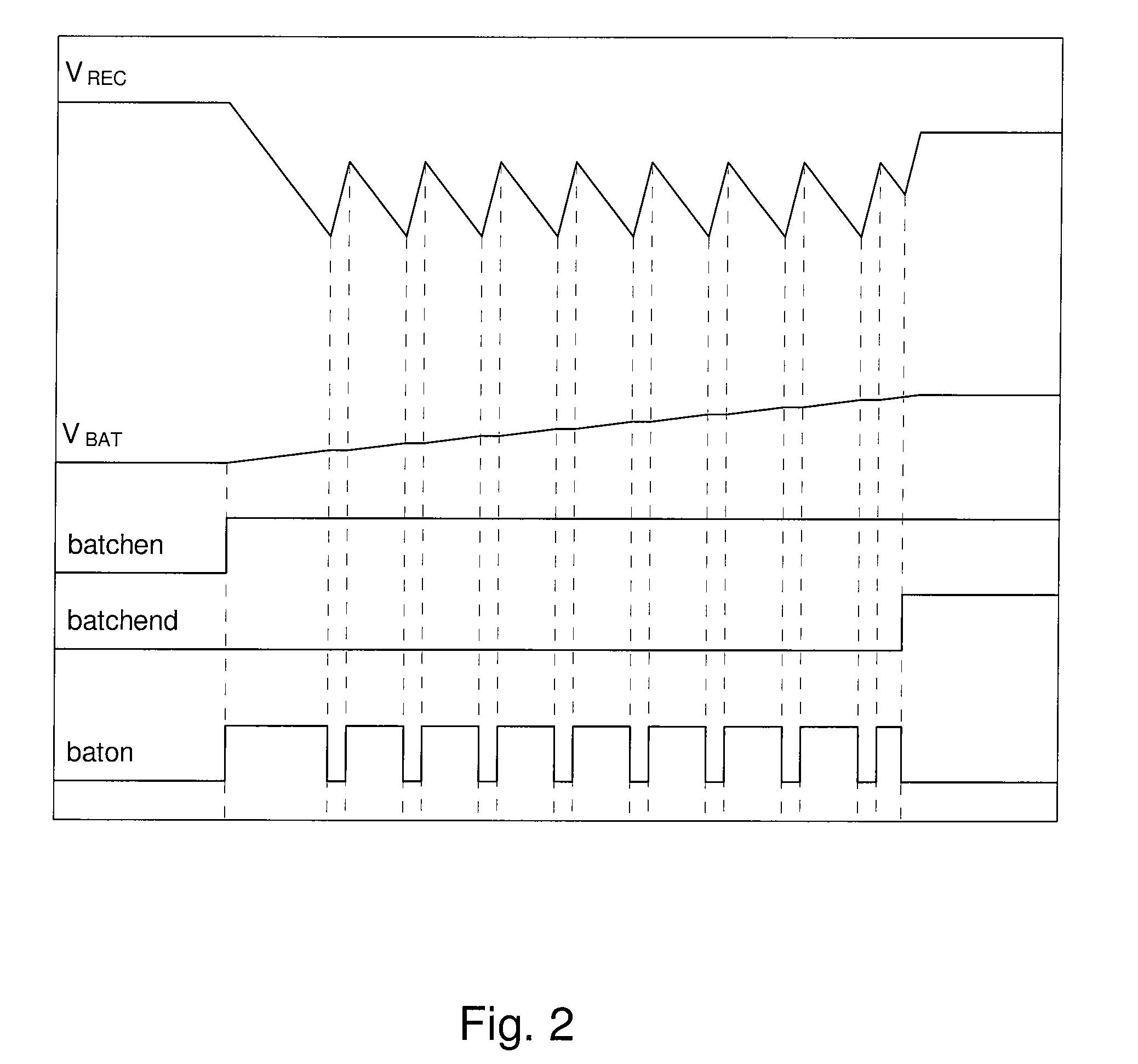Battery charger operating “all or nothing” with a protective power supply circuit for monolithic integrated circuits using the antenna energy
a protection power supply and battery charger technology, applied in the field of integrated monolithic radiofrequency circuits, can solve the problems of difficult to reconcile battery chargers, difficult to meet certain requirements, space restriction, etc., and achieve the effect of preventing poor operation of the circuit dedicated to recharging the battery and ensuring the precise end of charge voltag
- Summary
- Abstract
- Description
- Claims
- Application Information
AI Technical Summary
Benefits of technology
Problems solved by technology
Method used
Image
Examples
Embodiment Construction
[0034]The present invention, which will now be presented, is given purely by way of non-limiting illustration with reference to FIGS. 1 to 6. The solution proposed consists in finding a suitable structure for a battery charger integrated in a monolithic integrated circuit, which answers the specifications but without exhibiting the numerous drawbacks encountered in the prior art. The battery charger structure developed here therefore operates in an “all or nothing” system, i.e. by switching to charging the battery in the “ON” mode and to not charging the battery in the “OFF” mode.
[0035]FIG. 1 shows a block diagram of an integrated radiofrequency circuit according to a preferred embodiment of the invention. The radiofrequency circuit includes a monolithic integrated circuit IC 1. The components outside monolithic integrated circuit 1 are limited to the antenna 2 (or antennae if there are several), the capacitors (not all shown) for uncoupling the various internal supply voltages and ...
PUM
 Login to View More
Login to View More Abstract
Description
Claims
Application Information
 Login to View More
Login to View More - R&D
- Intellectual Property
- Life Sciences
- Materials
- Tech Scout
- Unparalleled Data Quality
- Higher Quality Content
- 60% Fewer Hallucinations
Browse by: Latest US Patents, China's latest patents, Technical Efficacy Thesaurus, Application Domain, Technology Topic, Popular Technical Reports.
© 2025 PatSnap. All rights reserved.Legal|Privacy policy|Modern Slavery Act Transparency Statement|Sitemap|About US| Contact US: help@patsnap.com



